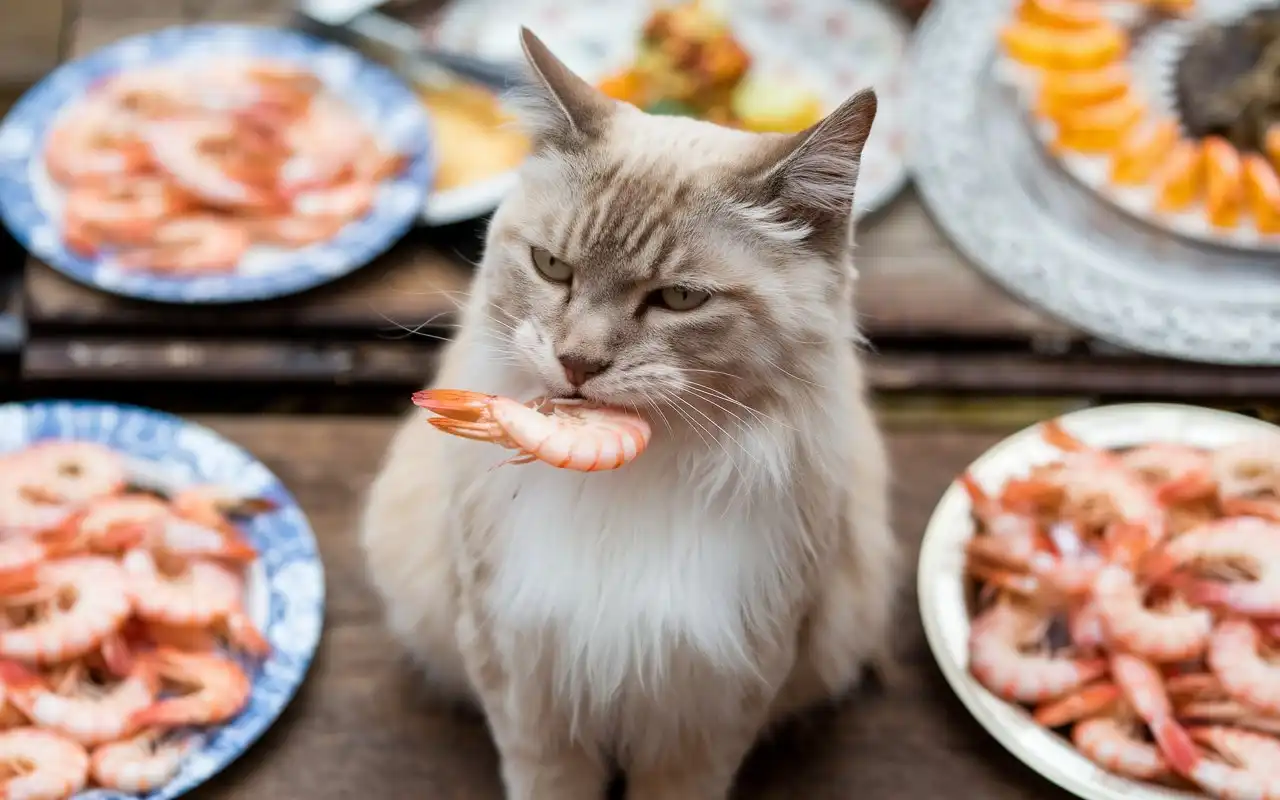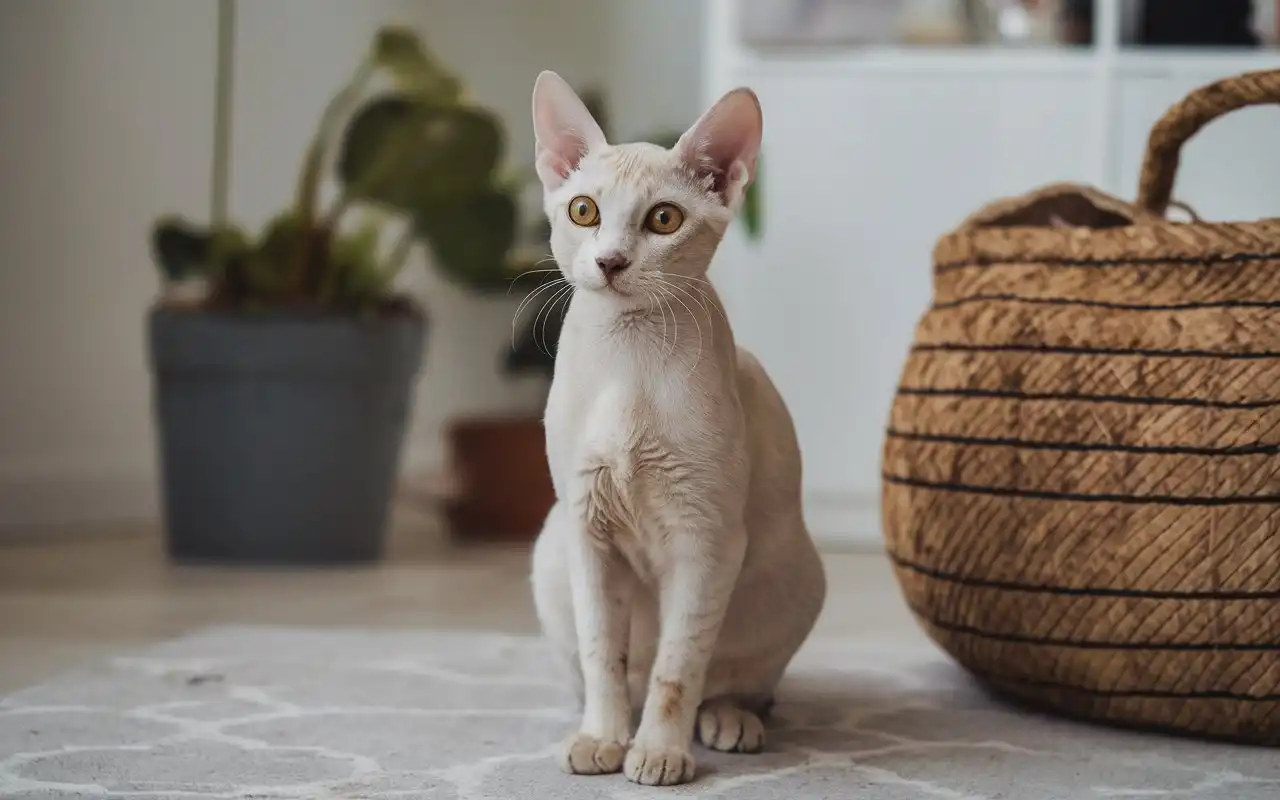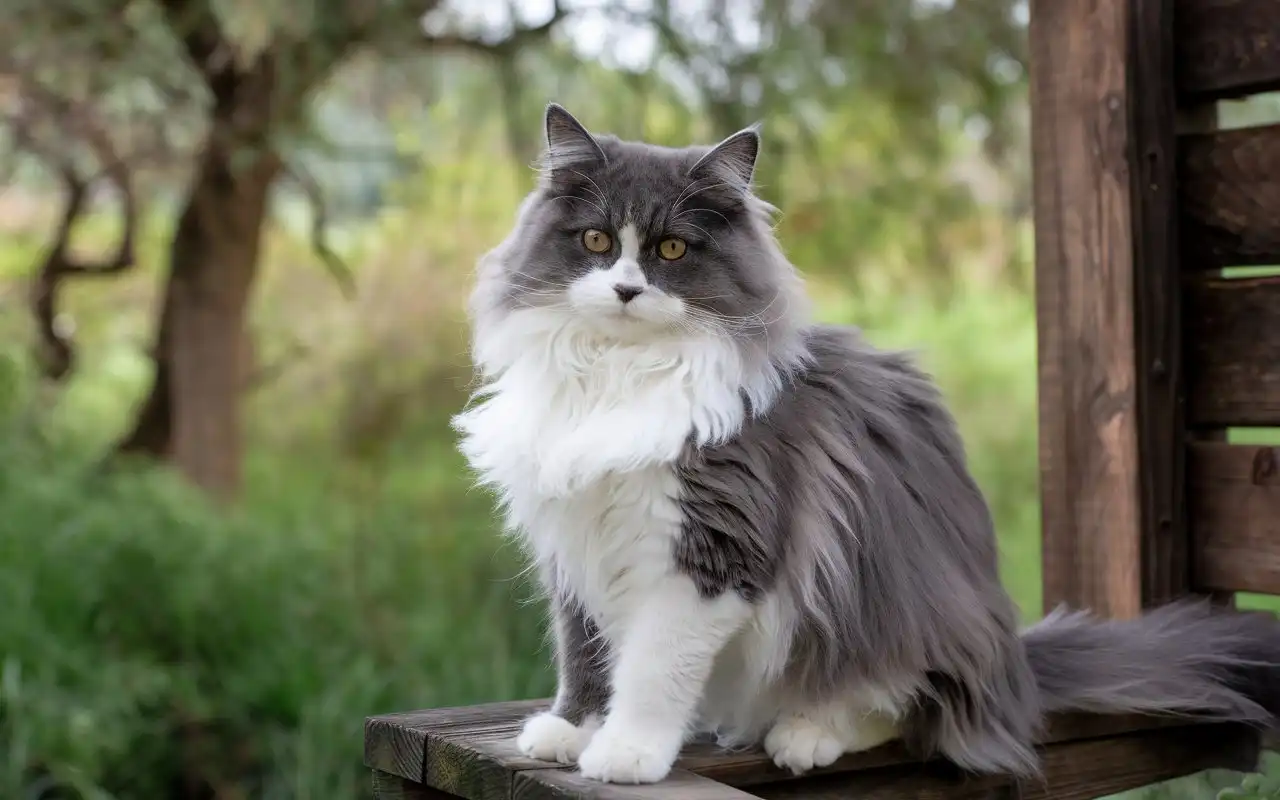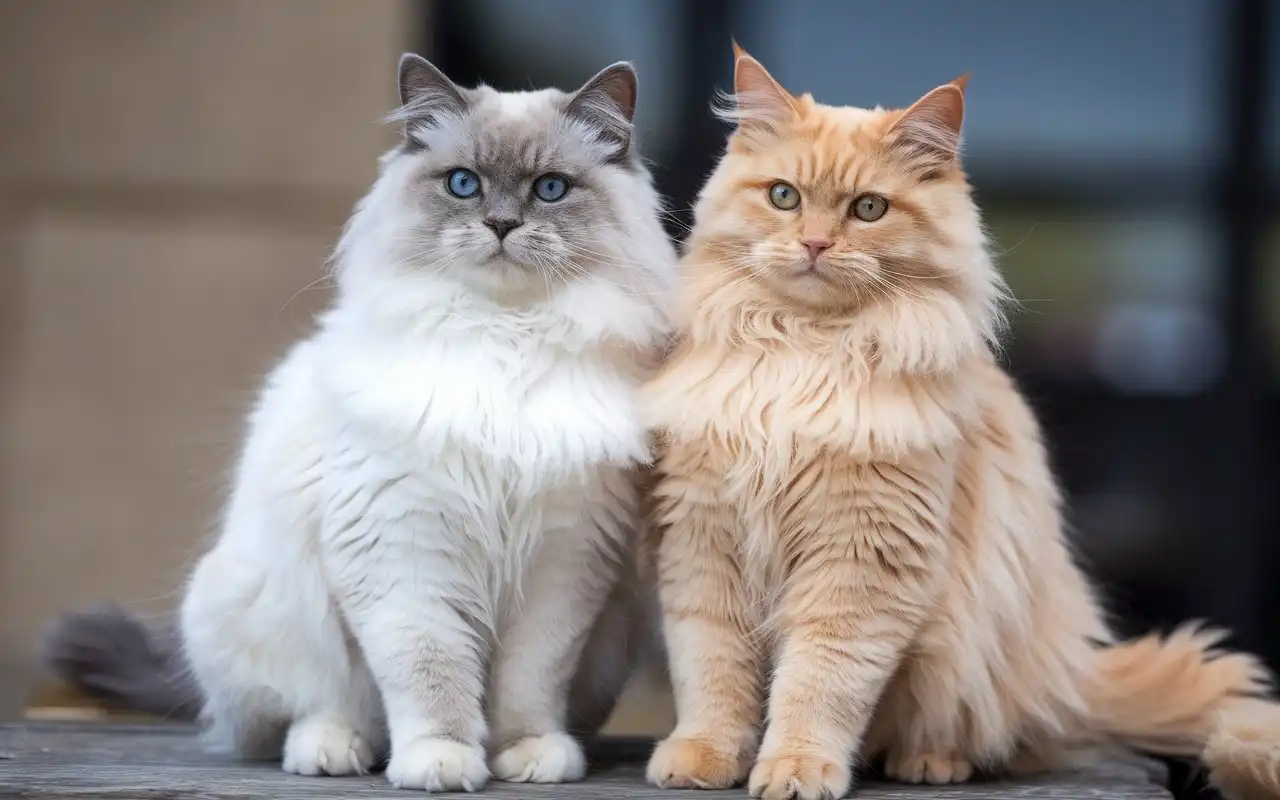Can cats eat shrimp? Many pet owners wonder about this. It’s common when their cats show an interest in seafood. Cats are curious. They are intrigued by strong smells, especially seafood. But just because cats want to eat something doesn’t always mean it’s safe. This article will explore the pros and cons of shrimp for cats. It will cover its nutrition and safe ways to serve it. By the end, you’ll have a clear answer to whether shrimp is a delicious treat or a dangerous delight for your cat.
Table of Contents
Nutritional Benefits of Shrimp for Cats
Shrimp is a protein powerhouse that contains essential nutrients beneficial to cats. It’s high in quality protein. It’s crucial for muscle growth and energy in cats. Cats are mandatory carnivores. They thrive on animal-based proteins. Shrimp’s protein builds lean muscle and fuels play. Also, shrimp is low in fat and calories. It’s a healthy treat for cats on a diet.
Shrimp has Omega-3 fatty acids. They support skin and joint health in aging cats. They also promote a shiny coat. It is a source of important vitamins like B12, which supports a cat’s nervous system and digestive health. Shrimp also contains magnesium, phosphorus, and selenium. They support bone health, metabolism, and immunity. Shrimp is good for cats, but it lacks some nutrients. So, only serve it as an occasional treat.
Is Shrimp Safe for Cats?
Shrimp can be safe for cats if prepared properly, but not all forms are equally safe. Raw shrimp can pose risks because it may contain harmful bacteria or parasites, which can lead to foodborne illnesses. Cooking the shrimp helps eliminate these hazards, making it safer for cats to consume. If you do feed shrimp to your cat, always make sure it is plain and unseasoned. Common seasonings like garlic, onions, or certain spices can be toxic to cats and should be strictly avoided.
Moreover, shrimp should be given in moderation. Overfeeding shrimp may lead to digestive upset due to their richness, especially in cats who aren’t accustomed to seafood. To sum up, shrimp are safe if they’re cooked, plain, and given in small quantities. Keeping these precautions in mind helps ensure that shrimp remain a safe and enjoyable treat for your feline friend.
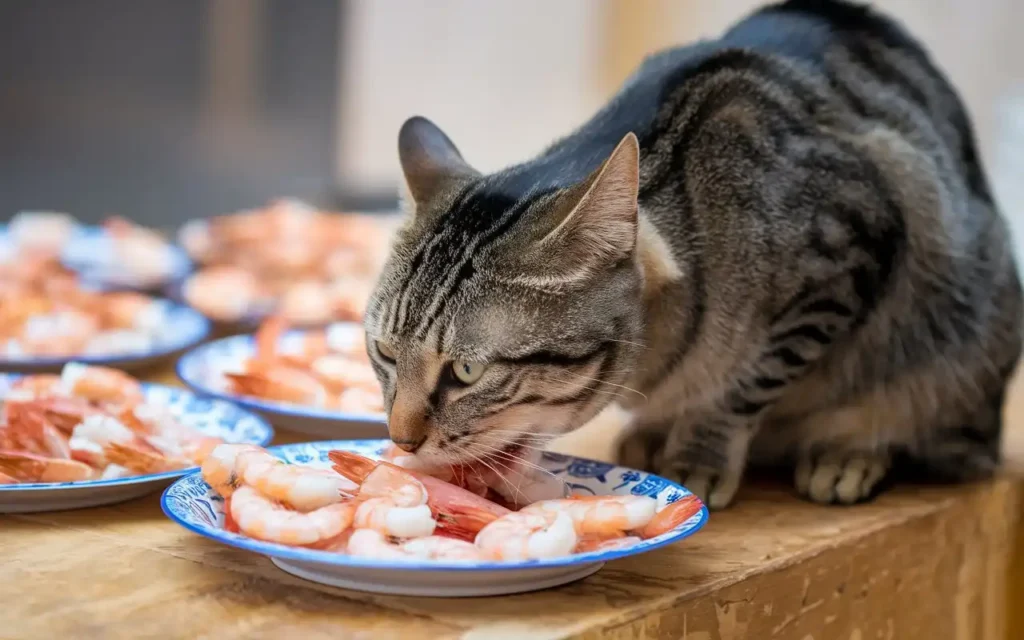
Potential Risks of Feeding Shrimp to Cats
While shrimp has some health benefits, it also comes with potential risks. Cats can develop food allergies, including shellfish. This may cause itching, digestive issues, or respiratory problems. These allergies can sometimes manifest suddenly, even if a cat has had shrimp before without any problems.
Another risk to consider is the sodium content. Some shrimp, especially frozen or pre-packaged kinds, have added salt or preservatives. High sodium intake can harm cats. It may cause dehydration, high blood pressure, and, in extreme cases, kidney issues. It’s best to choose fresh or frozen shrimp without additives to reduce these risks.
Also, feeding shrimp too often can upset some cats’ stomachs. Its richness can cause vomiting, diarrhea, or cramps. To avoid these issues, keep shrimp as an occasional treat and check your cat for any adverse reactions.


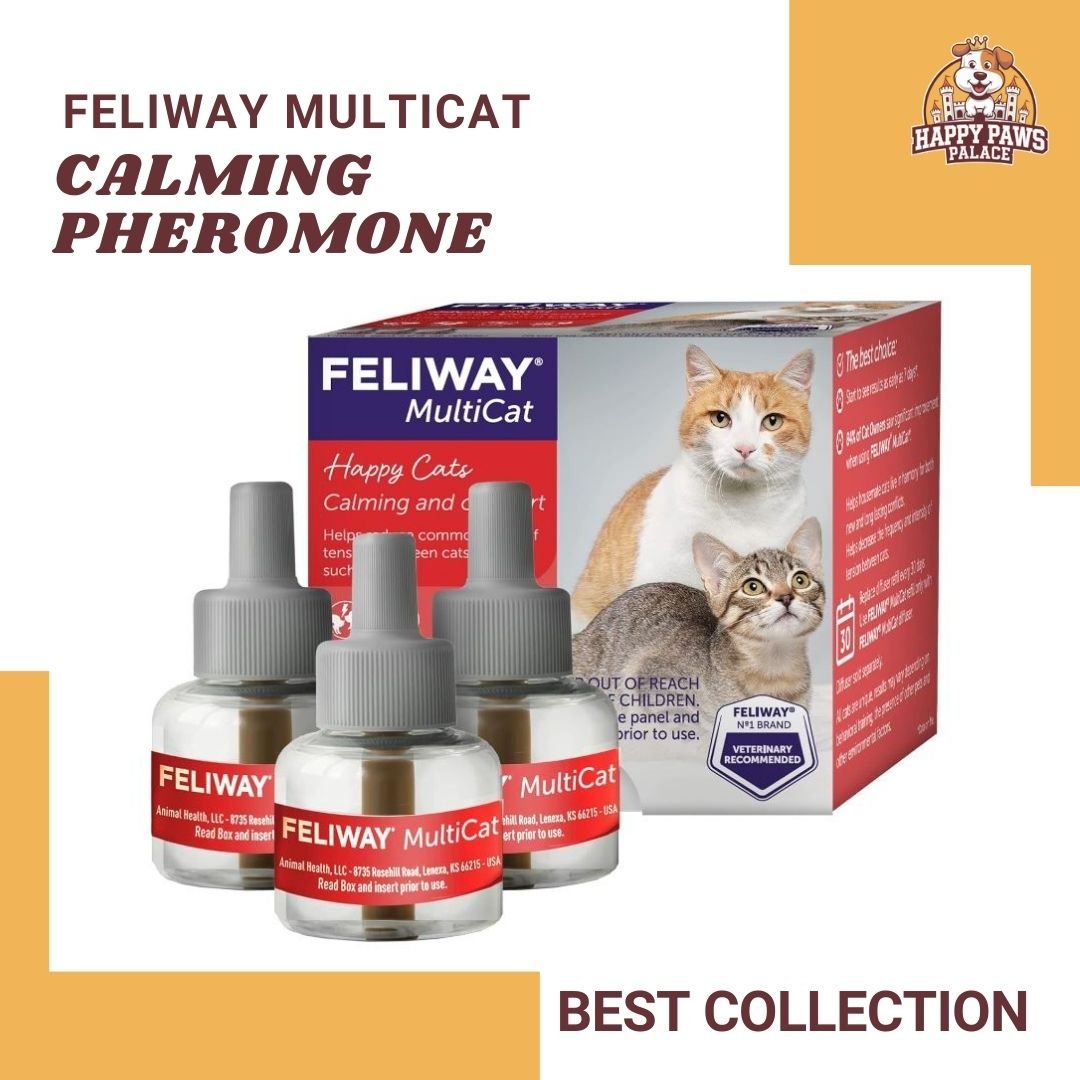
Can Cats Eat Raw Shrimp?
Feeding raw shrimp to cats is not generally recommended due to the risk of harmful bacteria and parasites. Raw shrimp may contain organisms like Salmonella or Listeria. They can cause severe foodborne illnesses. Some cat owners argue that wild cats eat raw meat. But, domestic cats may lack immunity to some bacteria. They are not exposed to the same variety of them.
If you’re set on offering raw shrimp, it’s essential to source high-quality, fresh shrimp and thoroughly wash it before feeding. However, even with these precautions, the risk remains, so cooking the shrimp slightly is often a safer option. In most cases, lightly steaming or boiling shrimp is enough. It kills harmful bacteria and keeps most of the nutrients. It’s a safer option than raw shrimp for your cat.
Can Cats Eat Cooked Shrimp?
Cooked shrimp is the safest way to serve shrimp to cats. When cooking, opt for simple methods like boiling or steaming without any seasonings or oils. These methods keep the shrimp’s natural flavor and texture. They don’t add harmful additives. Frying or grilling shrimp adds unnecessary fats and oils. They may upset cats’ stomachs and aren’t needed for flavor.
Cooked shrimp eliminates the risks of raw shrimp, like bacteria. Just remember to let the shrimp cool before offering it to your cat, as they may be sensitive to hot foods. Cooked shrimp, prepared this way, makes a nutritious, protein-rich treat that is easy for cats to enjoy and digest.
Can Cats Eat Shrimp Tails?
Shrimp tails might seem harmless, but they can be a choking hazard, particularly for smaller cats. Cats are natural hunters, and some may enjoy chewing on crunchy textures like shrimp tails. However, the tails’ hard, sharp texture makes them hard to chew and digest. This increases the risk of choking or digestive blockages.
For safety, it’s best to remove the tails before serving shrimp to your cat. If you do decide to offer shrimp tails, consider grinding them into a fine powder and sprinkling a tiny amount over your cat’s regular food. This can provide a similar taste without the risks associated with whole shrimp tails.
Can Cats Eat Shrimp Shells?
Shrimp shells, like tails, are generally not recommended for cats due to their tough, sharp edges. Some cats may chew on them without issue. But, shrimp shells are not easily digestible. They can cause irritation or blockages in the gut. These risks are even higher if the shell fragments are sharp or uneven.
To make shrimp shells safer, some pet owners grind them into a fine powder, which can be mixed into cat food. This method ensures that the shell’s nutrients are accessible without posing a choking hazard. However, this is optional, as cats can still enjoy shrimp without the shell. When in doubt, it’s best to remove the shells entirely to prioritize your cat’s safety.
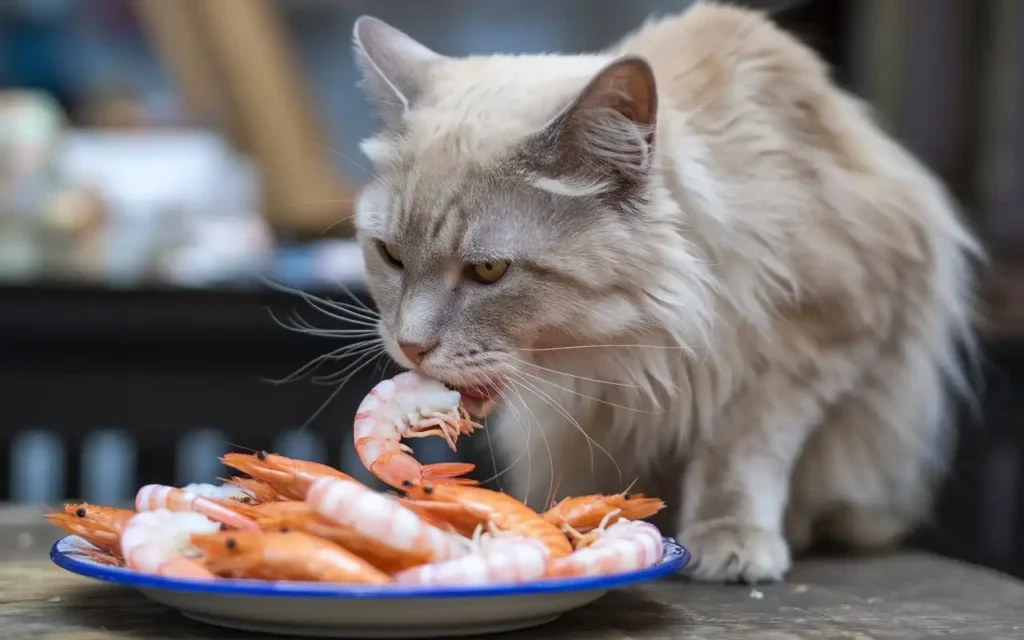
Shrimp as a Treat vs. Regular Food
Shrimp should be treated as a special snack rather than a staple in your cat’s diet. Shrimp has protein and other nutrients. But, it lacks the complete, balanced nutrition that cats need. Commercial cat food meets cats’ dietary needs. So, shrimp should be an occasional treat, not a main food.
A proper part of shrimp for a cat is about half a shrimp per serving, no more than once or twice a week. This ensures your cat gets the benefits of shrimp. It avoids nutrient imbalances or too much protein, which could harm their kidneys. Think of shrimp as a dessert—it’s nice to have occasionally, but not as a regular part of the menu.
How to Introduce Shrimp to Your Cat’s Diet
If you decide to introduce shrimp to your cat’s diet, do so gradually. Begin with a small piece. Then, watch how your cat reacts. Keep an eye out for any signs of digestive upset or allergies, such as vomiting, diarrhea, or skin reactions. If your cat tolerates shrimp well, you can occasionally increase the portion size to around half a shrimp per treat.
It’s also essential to monitor your cat’s reaction over time. Sometimes, allergies or sensitivities develop with repeated exposure, so it’s good to stay cautious. By gradually introducing shrimp, you reduce the risk of shocking your cat’s system and allow them to adjust safely to this new treat.
Signs of Shrimp Allergies in Cats
Cats, like humans, can develop food allergies, and shrimp is one of the common allergens for pets. Cats with a shrimp allergy may have itchy skin, face or paw swelling, vomiting, diarrhea, or trouble breathing. In severe cases, shrimp allergies can cause anaphylaxis. This life-threatening reaction requires immediate veterinary care.
If you suspect your cat has an allergy to shrimp, it’s crucial to stop feeding it immediately and consult your vet. They may recommend allergy testing to confirm and help you determine safe treat options for your cat. Staying vigilant for these signs ensures that shrimp remains a safe treat for your cat without compromising their health.
Can Kittens Eat Shrimp?
Kittens have different dietary needs than adult cats, as they are still in critical growth phases. A kitten’s primary source of nutrition should be a high-quality kitten food rich in proteins, fats, vitamins, and minerals. While a small piece of cooked shrimp may be safe for a kitten as a rare treat, it is not ideal for regular consumption.
Kittens’ digestive systems are more sensitive than adult cats’. This makes them more prone to stomach issues from new foods. If you want to offer shrimp to a kitten, always consult a vet first to ensure it aligns with their dietary needs.
Alternative Seafood Treats for Cats
If your cat enjoys shrimp, they might appreciate other seafood options. Salmon, mackerel, and tuna are other safe seafood treats for cats, provided they are plain, cooked, and unseasoned. Like shrimp, these fish are high in protein and Omega-3 fatty acids, which support a healthy coat and immune system.
Remember, however, that seafood should not be the main component of your cat’s diet. Offer these seafood options occasionally and in small amounts. It is also a good idea to rotate between treats to provide variety without relying on any one type too frequently.

Conclusion
In the end, can cats eat shrimp? Yes, they can enjoy shrimp as a special treat, but it’s important to serve it safely. Shrimp is a good source of protein, omega-3s, and vitamins. But it can cause allergies and high sodium if fed too much. Stick to plain, cooked shrimp without tails or shells to ensure your cat enjoys a tasty, safe snack. And, as with any new treat, check your cat’s reaction to keep them healthy and happy.

